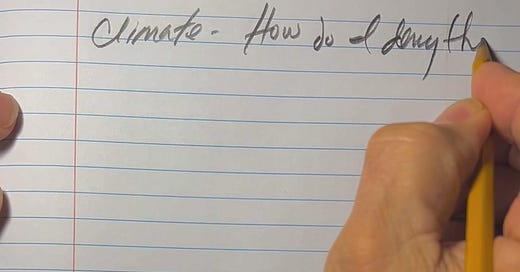Climate, how do I deny thee? Let me count the ways.
I deny thee to the depth and breadth and height
My arrogance can reach, when feeling out of sight
For the ends of Truth and Public Duty.
I deny thee to the level of every day's
Most mundane need, by fuel and firelight.
I deny thee freely, as men strive for Solutions;
I deny thee purely, as they turn from Greed.
I deny thee with the passion put to use
In my old habits, and with my selfish ways.
I deny thee with a faith I seemed to lose
With my lost reason,—I deny thee with the vote,
Words, actions, of all my life!—and, if Truth choose,
I shall but deny thee better after you bring more death.
—Written by Xavier Cortada, conceptualized during my Artist Residency at Hubbard Brook Experimental Forest. Adapted from Elizabeth Barrett Browning's sonnet, "How Do I Love Thee?"
Climate, How Do I Deny Thee? Let Me Count the Ways
Dismissing Facts
Electing Deniers
Spreading Falsehoods
Supporting Polluters
Minimizing Crises
Avoiding Responsibility
Neglecting Stewardship
Postponing Action
Living Unsustainably
How This Sonnet Came to Be:
During my Artist Residency at the Hubbard Brook Experimental Forest in the White Mountains, I've been reflecting on climate denial. Hubbard Brook is a long-term ecological research site dedicated to better understanding the human impact on our climate. I've been coming here since 2012, and each visit deepens my insight into these critical issues. No matter how much research exists on our climate crisis, many still find countless ways of denying the urgency of the moment.
I wanted to bring that to account. There were a number of ways of doing that, so I turned to poetry: Inspired by Elizabeth Barrett Browning's sonnet, "How Do I Love Thee?" I came up with the idea to adapt it to highlight the various ways society denies the climate crisis. I wanted to create a piece that not only acknowledges outright denial but also addresses the more subtle, insidious forms of inaction and complacency. To bring this concept to life, I worked with ChatGPT, an AI language model, to help craft the language and structure of the sonnet, ensuring it captures the essence of these themes. This piece aims to provoke thought and underscore our collective responsibility to address this critical issue.








Share this post